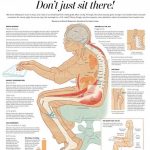Reflexology
Reflexology is the application of appropriate pressure to specific points and areas on the feet, hands, or ears. Reflexologists believe that these reflex points correspond to different body organs and systems, and that pressing them has a beneficial effect on the person’s health.
For example, reflexology holds that a specific spot in the arch of the foot corresponds to the bladder. When a reflexology practitioner uses thumbs or fingers to apply appropriate pressure to this area, it may affect bladder functioning.Although reflexology is not used to diagnose or cure health disorders, millions of people around the world use it to complement other treatments when addressing conditions like Anxiety,asthma, cancer treatment, cardiovascular issues,diabetes, headaches, kidney function, PMS, and sinusitis.
Benefits of Reflexology:
- Relaxation
- Deeper Breathing
- Improved Oxidation throughout the body
- Improved Circulation & Quality of sleep
- Energizes and increases vitality
- Improved focus and concentration
- Increased creativity
-
- Complements cancer treatment
- Improves headaches
- Enhances overall wellbeing
What Is the History of Reflexology?
Because reflexology is an ancient practice, its origin and history is difficult to track. However, reflexology is thought to have been passed down through an oral tradition, and possibly first recorded as a pictograph on the Egyptian tomb of Ankhamor in 2330 BC along with other medical procedures. Reflexology symbols are thought to be recorded on the feet of statues of Buddha in India and later China.
How Does Reflexology Work?
Reflexologists postulate that reflexology helps release stress, which in turn helps the body heal and regenerate itself. There are several theories about how this process work.
+ Reflexology works with the central nervous system.
This theory builds on research done in the 1890s by Sir Henry Head and Sir Charles Sherrington, who began to show through their research that a neurological relationship exists between the skin and the internal organs, and that the whole nervous system adjusts to a stimulus.
According to the theory, the reflexologist’s application of pressure to feet, hands, or ears sends a calming message from the peripheral nerves in these extremities to the central nervous system, which in turn signals the body to adjust the tension level. This enhances overall relaxation, brings internal organs and their systems into a state of optimum functioning, and increases blood supply (which brings additional oxygen and nutrients to cells and enhances waste removal). It positively affects the circulatory, respiratory, endocrine, immune, and neuropeptide systems in the body.
+Reflexology reduces pain by reducing stress and improving mood.
Another theory that may also explain how reflexology can produce pain relief is the gate control theory, or, more recently, the neuromatrix theory of pain. This theory suggests that pain is a subjective experience created by your brain. The brain does this in response to the sensory experience of pain, but it can also work independently of sensory input and create pain in response to emotional or cognitive factors. Thus things that influence the brain, such as your mood or external factors like stress can also affect your experience of pain. According to this theory, reflexology may reduce pain by reducing stress and improving mood.
+Reflexology keeps the body’s “vital energy” flowing.
Another theory that may also explain how reflexology can produce pain relief is the gate control theory, or, more recently, the neuromatrix theory of pain. This theory suggests that pain is a subjective experience created by your brain. The brain does this in response to the sensory experience of pain, but it can also work independently of sensory input and create pain in response to emotional or cognitive factors. Thus things that influence the brain, such as your mood or external factors like stress can also affect your experience of pain. According to this theory, reflexology may reduce pain by reducing stress and improving mood.
Yet another theory holds that there is a “vital energy” in the human body. If stress is not addressed, it leads to congestion of energy, which in turn causes bodily inefficiencies, which can lead to illness. According to this theory, reflexology helps keep the energy flowing.
+ Zone theory
The recognition of reflexology as a specific type of treatment began with Zone Theory, in which the body is divided into 10 vertical zones. Each zone corresponds to fingers and toes all the way up to the top of the head. For example, if you are standing up with your hands on your thighs (palms facing down) the thumbs and great toe would be zone 1. On either side of the body, the index finger and second toe would be zone 2, etc.
In reflexology theory, every organ, valve, muscle, etc. that lies within a zone can be accessed via a point or area on the feet or hands. For example, working between toes 2 and 3, or fingers 2 and 3, the eye point is found. These pathways between pressure points and other parts of the body are thought to be connected via the nervous system, as described above.
How Can Reflexology Help My Health and Healing?
Reflexology may be beneficial in restoring balance and harmony in the body and releasing tension. Practitioners believe that it helps facilitate a deep state of relaxation, calm the emotions, and produce a serene mind. Research studies support many of these benefits.
Many people describe a profound sense of relaxation and increased energy following their session. In addition, specific studies indicate that reflexology may reduce pain and anxiety.
Reflexology can improve work outcomes
Reflexology is growing increasingly popular across Europe and Asia as both a complement to other treatments and as a preventive measure. One example is Denmark, where various municipalities and companies have employed reflexologists since the early ’90s.
According to several studies, this practice in Denmark has resulted in reduced sick leave and absenteeism (and significant economic savings for the employers). Employees have consistently reported complete or partial improvement in conditions where they sought reflexologists’ help and even relief for additional problems related to stress. In one municipal district, almost one-third of the employees reported greater satisfaction with their jobs after completing six sessions with a reflexologist.
What Are Reflexology Points and Areas?
In reflexology theory, points and areas on the feet, hands, and ears correspond to specific organs, bones and body systems. Practitioners access these points on the feet and hands (bottom, sides, and top) and the ear (both inside as far as the finger can reach and outside) to affect organs and systems throughout the entire body.
To represent how the body systems correspond to one another, reflexologists use reflexology “maps.” Understandably, there is not agreement among all reflexologists on all points; however, general agreement does exist on major reflex points.
A reflexologist may perform a general, integrated session, or may focus on specific problem areas on the feet, hands or ears. For example, if time is limited and the person really needs to relax, the reflexologist may choose just to work on the ears.
Whatever the specific technique, reflexology theory holds that the practitioner is working to release congestion or stress in the nervous system and balance the body’s energy.







